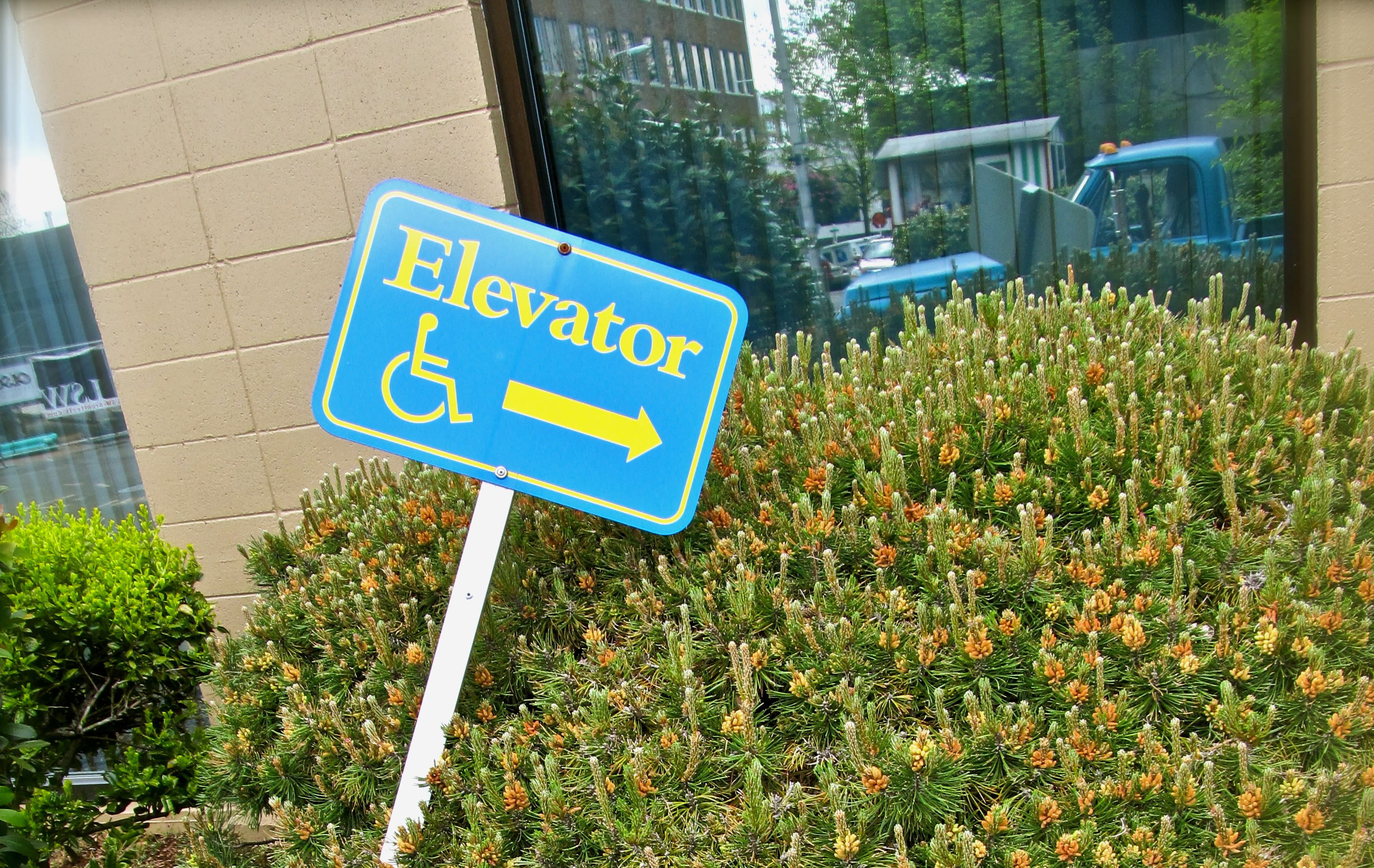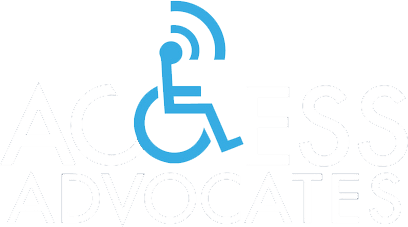
The checklist for ADA compliance for new lodging facilities covers inns, motels, hotels and other places of lodging. The following are the basics of what you should know about elevator and stair accessibility requirements for people with disabilities.
ELEVATORS:
Hotels more than two stories high must have a regular-size passenger elevator that stops at each floor of the hotel. This includes basement elevator access for people who cannot use stairs.
In the elevator lobby
The elevator elevator call buttons must not be blocked by ashtrays or with anything else placed projecting more than 4 inches. Elevator signs must show the floor, and the letters must be at least two inches high and raised. Braille characters must be centered at five feet above the floor.
On the elevator
The elevator must sound audible tones/bells or announcements that:
- indicate the direction of the elevator called – one ding for up and two for down.
- announce the passage of floors.
In case of emergency
Elevators with an emergency communication system must also have a system that is in addition to voice communication, for example light signals with instructions. If the emergency communication system is enclosed, the access enclosure doors must be easy to open with one hand.
Elevator control buttons
The highest floor control buttons must be no more than 4 feet, 6 inches off the floor. Raised letters and Braille characters must accompany each floor number.
HOTELS WITH FLOORS CONNECTED ONLY BY STAIRS (FEWER THAN TWO STORIES):
Stair risers and treads
The stairs must have closed risers so that a can or crutch cannot slip between the risers and cause loss of balance. Additionally all stair treads must be the same in depth and be at least 11 inches deep.
Handrails
There must be handrails on both sides of the stair and 34 to 38 inches above the edge of the step. The handrails must extend horizontally at the top and bottom of each stair section to provide a stable gripping location before proceeding up or down the stairs.
The handrails must not be interrupted by vertical supports, posts or anything that requires the user to change the position of the hands while ascending or descending.
Do you need help improving accessibility in your community? We have the expertise and resources to help you make a positive difference in your life and the lives of all people with disabilities. Contact us and join us in our mission stop discrimination and help ensure ADA compliance, one building at a time!
Image courtesy of Flickr, Ricardo Wang
